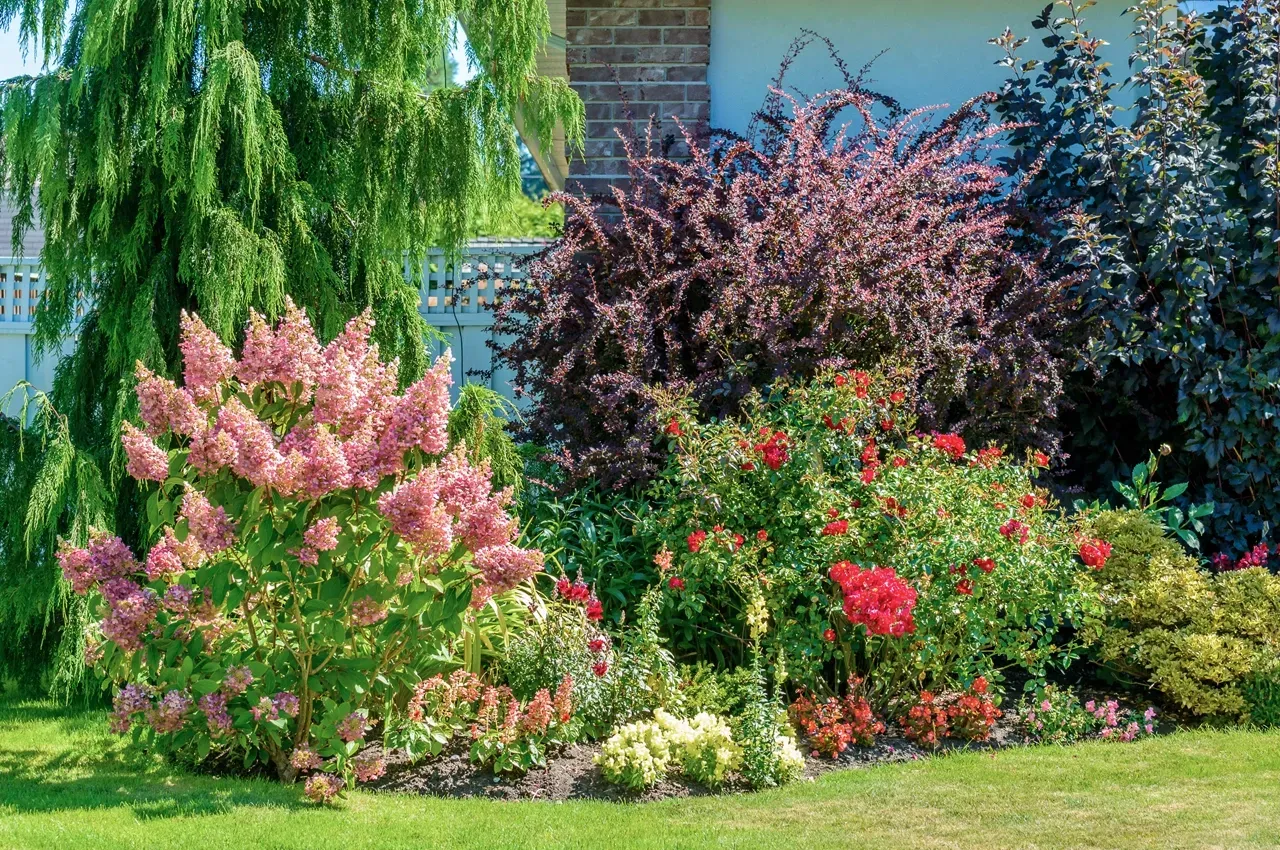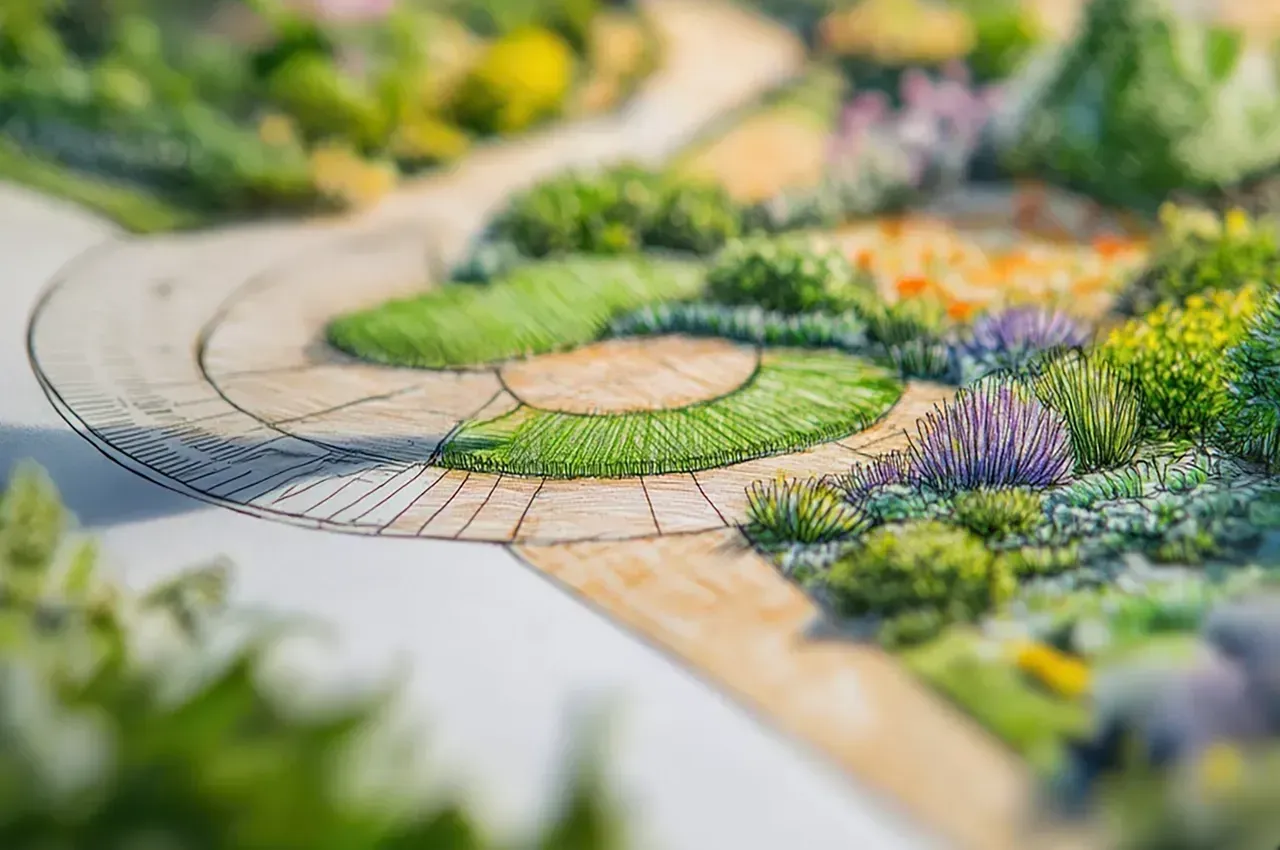
Welcome to the Tips and Tricks page of Rosehill Palms! Whether you're a seasoned gardener or just starting your journey with plants, our wealth of experience in the world of horticulture is here to guide you.
On this page, you'll find invaluable advice and practical tips for all aspects of gardening, from choosing the right plants to mastering advanced techniques.
Our expert team at Rosehill Palms is dedicated to helping you create and maintain beautiful, thriving outdoor spaces. Dive into our comprehensive guides and discover the secrets to successful gardening, tailored specifically for the Texas climate.
At Rosehill Palms, we believe that gardening should be a rewarding and enjoyable experience for everyone. That's why we've compiled a variety of tips and tricks to help you achieve the garden of your dreams.
Plant Selection and Care
Discover the best plants for your garden's unique conditions.
Learn how to care for a wide range of species, from tropical palms to native Texas flora
Gardening Techniques
Master the art of planting, pruning, and propagating your favorite plants.
Explore advanced techniques to enhance plant health and growth.
Seasonal Gardening
Get seasonal tips to keep your garden looking its best year-round.
Understand how to adapt your gardening practices to the changing Texas weather.
Sustainable Practices
Learn how to create an eco-friendly garden.
Discover sustainable gardening practices that benefit both your garden and the environment.
Landscape Design
Find inspiration and advice for designing stunning outdoor spaces.
Learn about the latest trends and how to implement them in your garden.
Problem-Solving
Get solutions to common gardening problems.
Learn how to identify and manage pests, diseases, and other challenges.
Our mission is to empower you with the knowledge and skills needed to cultivate a beautiful, healthy garden. Browse through our tips and tricks to make the most of your gardening journey, and let us guide you every step of the way. Happy gardening!
How to plant palms in Texas.
Select the Perfect Spot: Choose a sunny location with well-drained soil, mimicking the natural habitat of native palms.
Prepare the Soil: Enrich the planting area with organic compost to boost soil quality and enhance drainage.
Plant with Care: Dig a hole twice the width of the palm’s root ball and just as deep. Place the palm in the hole, ensuring the base is level with the ground and backfill with soil.
Water Wisely: Water thoroughly after planting and maintain consistent moisture. Newly planted palms need steady watering to establish strong roots.
Mulch Thoughtfully: Apply a layer of mulch around the base to retain moisture and suppress weeds. Keep mulch away from the trunk to prevent rot.
Ongoing Care: Regularly check for pests and diseases. Prune dead fronds to promote healthy growth.

What should I consider before pool landscaping?
Designing the area around your pool is all about blending beauty, safety, and low maintenance. Before you start planting, here are the essentials to keep in mind:
1. Prioritize Safety
Keep pathways wide and slip-resistant. Add lighting around steps, edges, and entry points to keep the space safe after dark. Make sure to keep plants properly pruned so they don’t encroach on walkways.
2. Think Low Maintenance
Pool areas get splashed, baked by the sun, and exposed to chemicals. Choose hardy, drought-tolerant plants that can handle extra moisture and heat.
3. Create Shade Strategically
Add shade with pergolas, umbrellas, or well-placed trees. Just avoid trees with invasive roots or heavy leaf drop close to the water.
4. Embrace a Clean Layout
Pool areas look best with simple, uncluttered designs. Use repeating textures, matching pots, or symmetrical plant placement for a polished look.
Pro tip: Ensure proper plant spacing as crowded pool edges can reduce airflow and make pool cleaning harder.

When is the best time to plant Trees and Shrubs?
Fall (Late October to November)
- Ideal for planting due to cooler temperatures and reduced stress on newly planted trees and shrubs.
- Allows roots to establish before winter dormancy.
- Takes advantage of natural rainfall, reducing the need for supplemental watering.
Early Winter (December to February)
- Continues to be suitable for planting as temperatures remain mild.
- Roots can continue to grow during the dormant season.
- Plants are well-prepared to flourish when spring arrives.
Benefits of Fall and Early Winter Planting
- Plants establish robust root systems that support healthy growth in spring and summer.
- Reduced risk of transplant shock compared to planting in hot summer months.
- Less maintenance is required due to cooler weather and higher moisture levels.
Considerations for Texas Planting Seasons
- Choose native or drought-tolerant species adapted to Texas climate conditions.
- Prepare planting holes with organic matter to improve soil quality and drainage.
- Apply mulch around trees and shrubs to conserve moisture and regulate soil temperature.
Spring and Summer Planting
- Possible but requires diligent watering and monitoring, especially during hot periods.
- Select heat-tolerant varieties and provide shade or shelter for newly planted trees and shrubs.
- Water deeply and regularly to promote root establishment and survival.

How can I make the most of evergreens?
Evergreens are the backbone of a great landscape–reliable, low-maintenance, and beautiful year-round. Here’s how to get the most out of them:
1. Use Evergreens for Structure in the Garden
Think of them as the framework of your yard. Use evergreens to outline beds, anchor corners, and keep your landscape looking full, even in the winter.
2. Create Natural Privacy
Tall evergreens like hollies, junipers, or cedars make great living screens to keep prying eyes, and even road noise, out of your outdoor living space. Use them along fences, property lines, or between neighbors with a softer look than fencing.
3. Highlight Key Areas
Place evergreens near the front door, driveway, or main patio to anchor key areas and enhance curb appeal. You can even use dwarf evergreens in pots on porches and patios to add texture and framing.
Pro tip: Choose native varieties that are well-adapted to Texas weather, as they will stay greener and require less maintenance.

What flowers are heat tolerant in Texas?
Columbine: Both red and yellow varieties thrive in moist, well-drained soil, tolerating shade and sun. Prune in late May to keep them healthy.
Coreopsis: The Lance-leaf variety, with its yellow blooms, attracts butterflies and thrives in sun and part shade. Prune spent blooms to encourage more flowers.
Fall Aster: This plant peaks in fall with delicate purple flowers and tolerates sun and part shade. It is lightly pruned in spring and summer.
Firebush: Known for its distinctive orange-red flowers that attract hummingbirds, this plant turns burgundy in autumn. Prune after the first freeze to encourage new growth.
Plumbago: With sky blue or white blooms, this plant prefers morning sun and afternoon shade, attracting butterflies. Cut back after a hard freeze.
Rock Rose: This small shrub attracts butterflies with its hibiscus-like blooms. Prune by a third in late winter to maintain its shape.
Sage: Various hardy varieties, such as Cedar, Cherry, and Mexican Bush, thrive in full sun and are deer—and rabbit-resistant. Prune after the first freeze.
Shrimp Plant: Its unique shrimp-like flowers thrive in the morning sun and afternoon shade, attracting hummingbirds. Prune to six inches in winter to promote new growth.

Where should I install outdoor lighting?
Outdoor lighting doesn’t need to be complicated — just strategic. Keep these quick placement tips in mind when planning your setup:
1. Pathways & Hardscapes
Add small, low lights along walkways to keep guests safe and guide movement. Space them out for a soft glow rather than a runway effect. Install lights on steps, retaining walls, and patios to prevent tripping hazards and make outdoor spaces more usable after dark.
2. Entry Points
Front doors, back patios, and side gates should all be well-lit. It instantly boosts safety, visibility, and curb appeal.
3. Focal Plants & Architectural Features
Use uplighting at the base of trees or structural plants to create drama and highlight natural features at night.
If your home has stonework, columns, or textured facades, add soft lighting to highlight them. Any water features can also benefit from creating stunning glows and reflections.
4. Garden Beds
Place low lights within planting beds to create depth and give your landscape a warm, inviting nighttime look.
5. Under Decks & Seating
Hidden LEDs under benches or deck overhangs add a clean, modern touch that elevates the whole space.
Pro Tip: Aim lights at features—not at your neighbors—and stick to
warm tones for a welcoming feel.

Companion Planting: A Smart Way to Garden
Choose the Right Partners: Pair plants that naturally benefit one another. For example, tomatoes pair well with basil, while carrots tend to thrive near onions.
Boost Soil Health: Plant nitrogen-fixing crops like beans and peas alongside heavy feeders, such as corn or tomatoes, to naturally enrich the soil.
Deter Pests Naturally: Use strong-scented herbs and flowers, like marigolds and basil, to repel harmful insects and protect nearby crops.
Improve Yields: Combine plants like corn, beans, and squash (“The Three Sisters”) to maximize space and harvest more from each bed.
Enhance Flavor: Grow herbs near vegetables—basil not only protects tomatoes but also improves their taste.
Avoid Bad Matches: Keep onions away from beans, tomatoes away from potatoes, and fennel away from most plants to prevent stunted growth.
Rotate Each Season: Change up companion pairs yearly to maintain healthy soil and reduce pest build-up.
Pro Tip from Rosehill Palms: Start small! Try one or two pairings—such as tomatoes with basil or carrots with onions—before expanding companion planting across your entire garden.

How do you take care of Succulents and Cacti?
Light:
- Gradually introduce direct sunlight to prevent sunburn.
- Nurse plants provide shade until they are mature enough for full sun.
Watering:
- Water generously but infrequently; allow soil to dry out between waterings.
- Avoid overwatering in colder temperatures to prevent rot.
Soil Mix:
- Use well-draining soil with equal parts soil, sand, peat moss or coconut coir, and perlite.
- Ensure soil is loose to allow proper root aeration and drainage.
Fertilization:
- Use a balanced liquid fertilizer during growing seasons; avoid high nitrogen to promote flowering.
Potting:
- Choose pots that allow soil to dry quickly, such as clay pots.
- Avoid over-potting to prevent moisture-related issues and bacterial infections.
Protection from Insects:
- Use homemade suffocant spray or pyrethrins to treat pests; ensure thorough coverage.
Temperature:
- Maintain temperatures suitable for each species; protect from frost for most succulents.
Propagating:
- Use stem cuttings for leaf succulents; allow callusing for succulent stems before planting.
- Provide intermittent mist for optimal rooting of certain species.
General Tips:
- Monitor plant responses and adjust care accordingly.
- Explore and enjoy the unique beauty of succulents and cacti in your garden or home.

How do you plant palms in Texas?

Select the Perfect Spot: Choose a sunny location with well-drained soil, mimicking the natural habitat of native palms.
Prepare the Soil: Enrich the planting area with organic compost to boost soil quality and enhance drainage.
Plant with Care: Dig a hole twice the width of the palm’s root ball and just as deep. Place the palm in the hole, ensuring the base is level with the ground and backfill with soil.
Water Wisely: Water thoroughly after planting and maintain consistent moisture. Newly planted palms need steady watering to establish strong roots.
Mulch Thoughtfully: Apply a layer of mulch around the base to retain moisture and suppress weeds. Keep mulch away from the trunk to prevent rot.
Ongoing Care: Regularly check for pests and diseases. Prune dead fronds to promote healthy growth.

What should I consider before pool landscaping?
Designing the area around your pool is all about blending beauty, safety, and low maintenance. Before you start planting, here are the essentials to keep in mind:
1. Prioritize Safety
Keep pathways wide and slip-resistant. Add lighting around steps, edges, and entry points to keep the space safe after dark. Make sure to keep plants properly pruned so they don’t encroach on walkways.
2. Think Low Maintenance
Pool areas get splashed, baked by the sun, and exposed to chemicals. Choose hardy, drought-tolerant plants that can handle extra moisture and heat.
3. Create Shade Strategically
Add shade with pergolas, umbrellas, or well-placed trees. Just avoid trees with invasive roots or heavy leaf drop close to the water.
4. Embrace a Clean Layout
Pool areas look best with simple, uncluttered designs. Use repeating textures, matching pots, or symmetrical plant placement for a polished look.
Pro tip: Ensure proper plant spacing as crowded pool edges can reduce airflow and make pool cleaning harder.

When is the best time to plant Trees and Shrubs?
Fall (Late October to November)
- Ideal for planting due to cooler temperatures and reduced stress on newly planted trees and shrubs.
- Allows roots to establish before winter dormancy.
- Takes advantage of natural rainfall, reducing the need for supplemental watering.
Early Winter (December to February)
- Continues to be suitable for planting as temperatures remain mild.
- Roots can continue to grow during the dormant season.
- Plants are well-prepared to flourish when spring arrives.
Benefits of Fall and Early Winter Planting
- Plants establish robust root systems that support healthy growth in spring and summer.
- Reduced risk of transplant shock compared to planting in hot summer months.
- Less maintenance is required due to cooler weather and higher moisture levels.
Considerations for Texas Planting Seasons
- Choose native or drought-tolerant species adapted to Texas climate conditions.
- Prepare planting holes with organic matter to improve soil quality and drainage.
- Apply mulch around trees and shrubs to conserve moisture and regulate soil temperature.
Spring and Summer Planting
- Possible but requires diligent watering and monitoring, especially during hot periods.
- Select heat-tolerant varieties and provide shade or shelter for newly planted trees and shrubs.
- Water deeply and regularly to promote root establishment and survival.

How can I make the most of evergreens?
Evergreens are the backbone of a great landscape–reliable, low-maintenance, and beautiful year-round. Here’s how to get the most out of them:
1. Use Evergreens for Structure in the Garden
Think of them as the framework of your yard. Use evergreens to outline beds, anchor corners, and keep your landscape looking full, even in the winter.
2. Create Natural Privacy
Tall evergreens like hollies, junipers, or cedars make great living screens to keep prying eyes, and even road noise, out of your outdoor living space. Use them along fences, property lines, or between neighbors with a softer look than fencing.
3. Highlight Key Areas
Place evergreens near the front door, driveway, or main patio to anchor key areas and enhance curb appeal. You can even use dwarf evergreens in pots on porches and patios to add texture and framing.
Pro tip: Choose native varieties that are well-adapted to Texas weather, as they will stay greener and require less maintenance.

What flowers are heat tolerant in Texas?
Columbine: Both red and yellow varieties thrive in moist, well-drained soil, tolerating shade and sun. Prune in late May to keep them healthy.
Coreopsis: The Lance-leaf variety, with its yellow blooms, attracts butterflies and thrives in sun and part shade. Prune spent blooms to encourage more flowers.
Fall Aster: This plant peaks in fall with delicate purple flowers and tolerates sun and part shade. It is lightly pruned in spring and summer.
Firebush: Known for its distinctive orange-red flowers that attract hummingbirds, this plant turns burgundy in autumn. Prune after the first freeze to encourage new growth.
Plumbago: With sky blue or white blooms, this plant prefers morning sun and afternoon shade, attracting butterflies. Cut back after a hard freeze.
Rock Rose: This small shrub attracts butterflies with its hibiscus-like blooms. Prune by a third in late winter to maintain its shape.
Sage: Various hardy varieties, such as Cedar, Cherry, and Mexican Bush, thrive in full sun and are deer—and rabbit-resistant. Prune after the first freeze.
Shrimp Plant: Its unique shrimp-like flowers thrive in the morning sun and afternoon shade, attracting hummingbirds. Prune to six inches in winter to promote new growth.

Where should I install outdoor lighting?
Outdoor lighting doesn’t need to be complicated — just strategic. Keep these quick placement tips in mind when planning your setup:
1. Pathways & Hardscapes
Add small, low lights along walkways to keep guests safe and guide movement. Space them out for a soft glow rather than a runway effect. Install lights on steps, retaining walls, and patios to prevent tripping hazards and make outdoor spaces more usable after dark.
2. Entry Points
Front doors, back patios, and side gates should all be well-lit. It instantly boosts safety, visibility, and curb appeal.
3. Focal Plants & Architectural Features
Use uplighting at the base of trees or structural plants to create drama and highlight natural features at night.
If your home has stonework, columns, or textured facades, add soft lighting to highlight them. Any water features can also benefit from creating stunning glows and reflections.
4. Garden Beds
Place low lights within planting beds to create depth and give your landscape a warm, inviting nighttime look.
5. Under Decks & Seating
Hidden LEDs under benches or deck overhangs add a clean, modern touch that elevates the whole space.

Companion Planting: A Smart Way to Garden
Choose the Right Partners: Pair plants that naturally benefit one another. For example, tomatoes pair well with basil, while carrots tend to thrive near onions.
Boost Soil Health: Plant nitrogen-fixing crops like beans and peas alongside heavy feeders, such as corn or tomatoes, to naturally enrich the soil.
Deter Pests Naturally: Use strong-scented herbs and flowers, like marigolds and basil, to repel harmful insects and protect nearby crops.
Improve Yields: Combine plants like corn, beans, and squash (“The Three Sisters”) to maximize space and harvest more from each bed.
Enhance Flavor: Grow herbs near vegetables—basil not only protects tomatoes but also improves their taste.
Avoid Bad Matches: Keep onions away from beans, tomatoes away from potatoes, and fennel away from most plants to prevent stunted growth.
Rotate Each Season: Change up companion pairs yearly to maintain healthy soil and reduce pest build-up.
Pro Tip from Rosehill Palms: Start small! Try one or two pairings—such as tomatoes with basil or carrots with onions—before expanding companion planting across your entire garden.

How do you take care of Succulents and Cacti?
Light:
- Gradually introduce direct sunlight to prevent sunburn.
- Nurse plants provide shade until they are mature enough for full sun.
Watering:
- Water generously but infrequently; allow soil to dry out between waterings.
- Avoid overwatering in colder temperatures to prevent rot.
Soil Mix:
- Use well-draining soil with equal parts soil, sand, peat moss or coconut coir, and perlite.
- Ensure soil is loose to allow proper root aeration and drainage.
Fertilization:
- Use a balanced liquid fertilizer during growing seasons; avoid high nitrogen to promote flowering.
Potting:
- Choose pots that allow soil to dry quickly, such as clay pots.
- Avoid over-potting to prevent moisture-related issues and bacterial infections.
Protection from Insects:
- Use homemade suffocant spray or pyrethrins to treat pests; ensure thorough coverage.
Temperature:
- Maintain temperatures suitable for each species; protect from frost for most succulents.
Propagating:
- Use stem cuttings for leaf succulents; allow callusing for succulent stems before planting.
- Provide intermittent mist for optimal rooting of certain species.
General Tips:
- Monitor plant responses and adjust care accordingly.
- Explore and enjoy the unique beauty of succulents and cacti in your garden or home.
Visit us. We are worth the trip.
Blog
Learn & Grow with Rosehill Palms
Proud member of the
Texas Nursery & Landscape Association
Please feel free to contact us via the form below. We will give you an answer as soon as possible!
Contact Rosehill Palms
We will get back to you as soon as possible.
Please try again later.
Rosehill Palms | Developed by Urdaneta Group WSI | All Rights Reserved 2025





